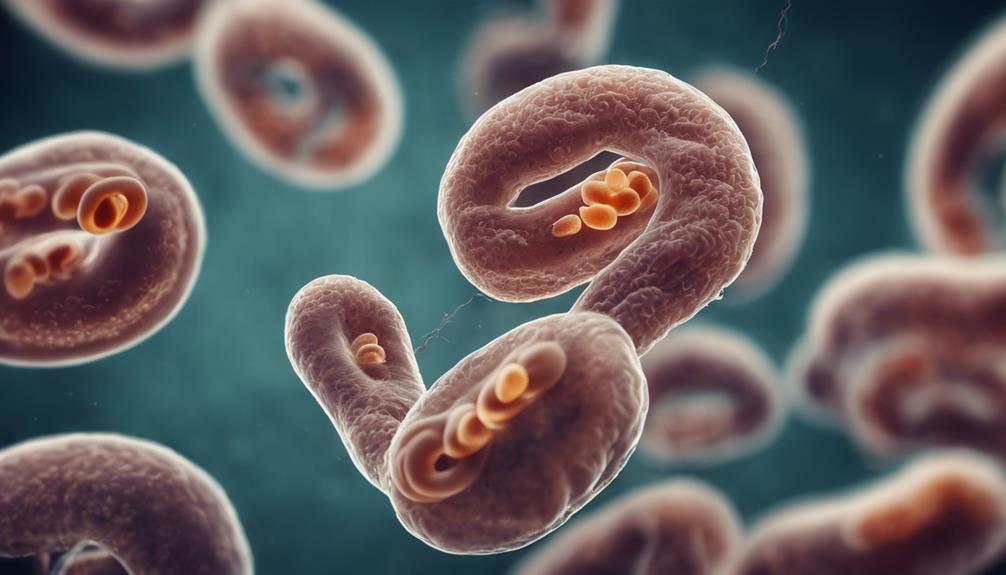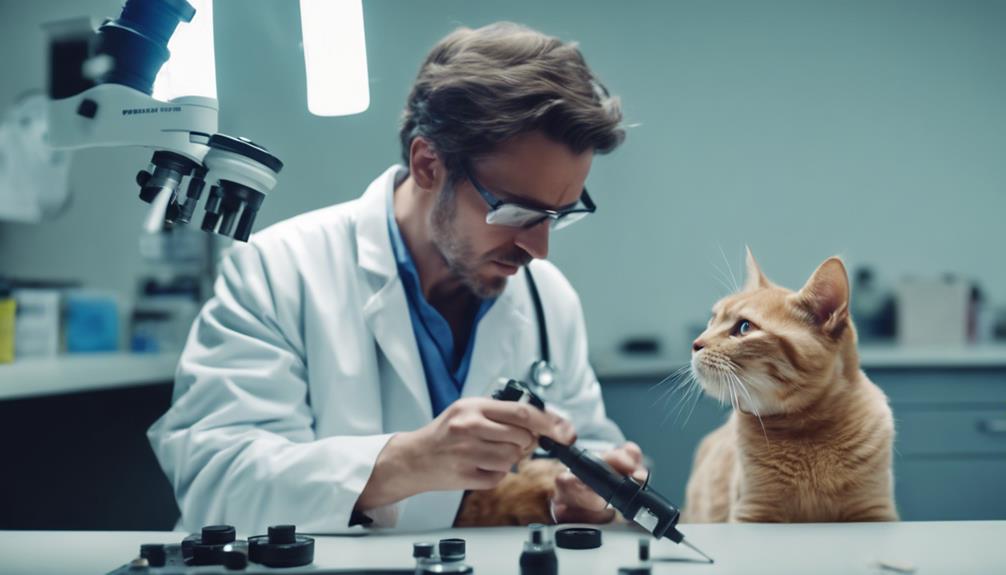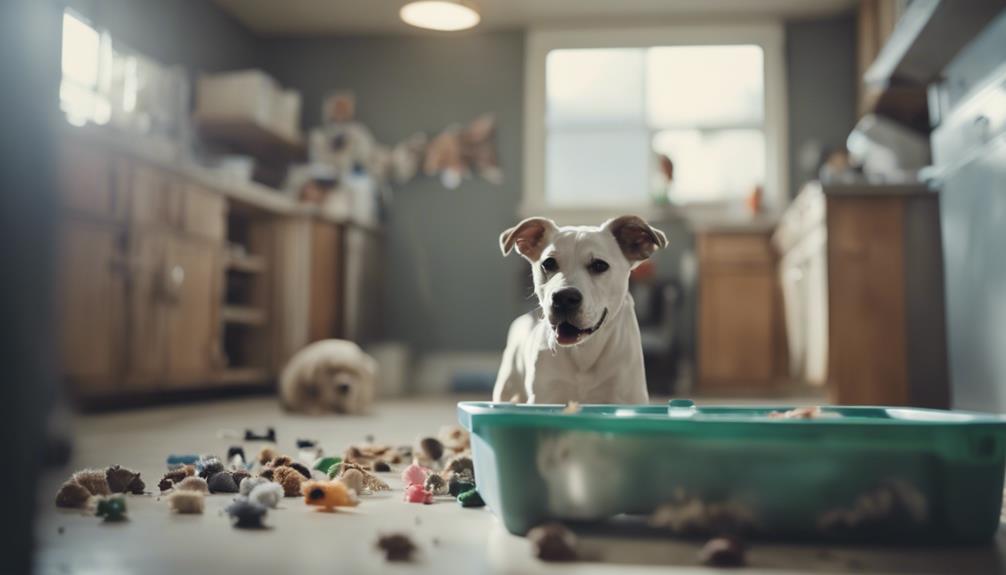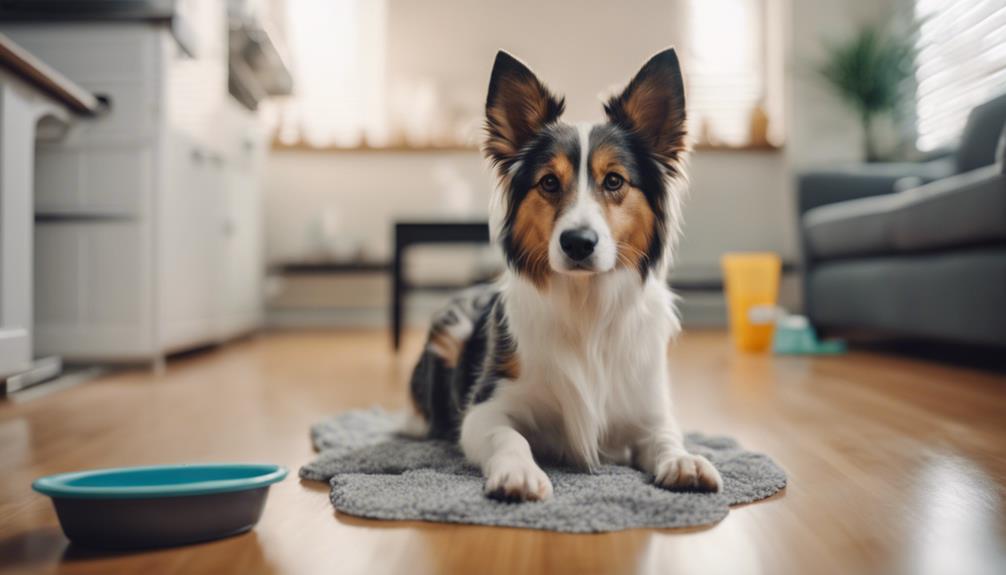Understanding the manifestations of coccidiosis in dogs and cats is imperative for pet owners and veterinarians to safeguard the well-being of their furry companions.
From subtle symptoms that can easily be overlooked to the intricacies of effective treatment protocols, a comprehensive grasp of this parasitic infection is indispensable.
By unraveling the nuanced interplay between clinical signs, diagnostic procedures, and tailored therapeutic interventions, this discourse aims to offer a roadmap towards proactive management and informed decision-making in addressing coccidiosis-related challenges in beloved pets.
Key Takeaways
- Coccidia are species-specific parasites, not easily transmissible to humans.
- Proper yard cleanup and hygiene prevent coccidia reinfection.
- Sulfadimethoxine is the primary treatment for coccidiosis in dogs.
- Regular fecal checks aid in early coccidia detection for effective treatment.
Coccidiosis Overview
In the realm of veterinary medicine, an understanding of coccidiosis serves as a crucial component for the effective management of parasitic infections in dogs and cats. Coccidiosis is caused by single-celled parasites known as coccidia, primarily affecting the intestinal tract of pets. These parasites are species-specific, with Isospora being common in dogs and Cryptosporidia posing a risk to both pets and humans.
While many infected pets may show no symptoms, puppies and immunocompromised dogs are more susceptible to diarrhea, dehydration, and abdominal discomfort. Veterinary diagnosis through fecal analysis helps identify coccidiosis, and treatment typically involves medications like sulfadimethoxine for a duration of three to 21 days. Proper sanitation and hygiene practices are crucial in preventing and managing coccidiosis in pets.
Transmission and Prevention
Effective prevention of coccidiosis in dogs and cats involves understanding the transmission mechanisms and implementing proper hygiene practices. Coccidia require a host animal to live and reproduce, with oocysts being shed in the stool and becoming infective in the environment.
Dogs may ingest oocysts from infected soil or by consuming temporary hosts like mice. To prevent coccidiosis transmission, consider the following measures:
- Proper yard cleanup to eliminate coccidia present in the environment.
- Regular fecal checks in young pets for early detection.
- Thorough sanitation practices and daily waste cleanup to prevent the spread of coccidia.
Nature of Coccidia

The nature of coccidia in dogs and cats reveals them as species-specific parasites that require a host animal for their survival and reproduction. Coccidia, such as Isospora and Cryptosporidia, are primarily adapted to infect specific species, with Isospora being common in dogs and Cryptosporidia posing a zoonotic risk to both humans and animals.
These protozoan parasites typically infect the intestinal tract, causing symptoms like diarrhea, dehydration, vomiting, and abdominal pain, especially in young or immunocompromised animals. Veterinarians can identify coccidial species through microscopic evaluation of fecal samples. Understanding the specific nature of coccidia is crucial for accurate diagnosis and targeted treatment in affected dogs and cats.
Symptoms in Dogs and Cats
Understanding the manifestations of coccidiosis in dogs and cats is crucial for prompt identification and appropriate management of the disease. Symptoms of coccidiosis in dogs and cats may include:
- Diarrhea: Pets may experience varying degrees of diarrhea, which can range from mild to severe.
- Dehydration: Prolonged diarrhea can lead to dehydration, especially in puppies and immunocompromised animals.
- Vomiting and Abdominal Pain: In severe cases, pets may exhibit vomiting and abdominal discomfort, indicating a more advanced stage of the disease.
Prompt recognition of these symptoms and seeking veterinary care is vital for effective treatment and recovery of pets affected by coccidiosis.
Diagnosis and Testing

Diagnosis of coccidiosis in dogs and cats typically involves fecal analysis conducted by a veterinarian. This process helps identify the presence of coccidia oocysts in the pet's stool. Veterinarians may perform a microscopic evaluation to confirm the diagnosis and determine the specific coccidial species affecting the animal.
Since many infected pets may not display symptoms, regular fecal checks, especially in young animals, are crucial for early detection. Additionally, it is essential for pet owners to collect fresh stool samples and follow the veterinarian's guidance on proper sample handling to ensure accurate test results.
Timely and accurate diagnosis plays a key role in initiating appropriate treatment and preventing the potential spread of coccidiosis.
Treatment Options
When addressing coccidiosis in dogs and cats, effective treatment strategies play a crucial role in managing the parasitic infection. Treatment options include:
- Medication: The approved medication for coccidiosis treatment in dogs is Sulfadimethoxine. Veterinarians may also use various off-label medications effectively.
- Duration: Treatment duration can vary from three to 21 days, depending on the severity of the infection and the response to medication.
- Sanitation: Proper sanitation is essential to eliminate coccidia oocysts from the environment. Indoor cleaning methods such as ammonia and steam cleaning can help prevent reinfection and aid in the recovery process.
Medications for Coccidiosis

Effective management of coccidiosis in dogs and cats involves utilizing specific medications tailored to combat the parasitic infection. Sulfadimethoxine is the primary FDA-approved medication for treating coccidia in dogs. However, veterinarians may also prescribe off-label medications such as ponazuril or toltrazuril, which have shown efficacy in treating coccidiosis.
These medications work by targeting the parasite's reproductive cycle, ultimately eliminating the infection. Treatment duration typically ranges from three to 21 days, depending on the severity of the infection and the response to the medication.
It is crucial to follow the veterinarian's instructions precisely and complete the full course of treatment to ensure the coccidia are fully eradicated from the pet's system.
Treatment Duration and Efficacy
The duration of treatment for coccidiosis in dogs and cats varies depending on the severity of the infection and the specific medication prescribed by the veterinarian. Treatment efficacy is crucial in ensuring the complete eradication of coccidia from the pet's system.
Here is a breakdown to help understand the treatment process:
- Duration Range: Treatment duration can vary from three to 21 days, with the length often determined by the severity of the infection and the pet's response to medication.
- Monitoring: Regular monitoring by the veterinarian is essential to track the progress of treatment and adjust the medication if needed.
- Follow-up: It is crucial to follow the veterinarian's instructions diligently, completing the full course of medication to ensure the effectiveness of treatment.
Sanitation Practices

Proper sanitation practices play a crucial role in preventing the spread and recurrence of coccidiosis in dogs and cats. Regular cleaning and disinfection of living areas can help eliminate coccidia oocysts, reducing the risk of infection. Here is a table summarizing effective sanitation practices:
| Sanitation Practice | Description |
|---|---|
| Remove feces promptly | Remove and dispose of pet waste promptly to prevent oocysts from contaminating the environment. |
| Disinfect living areas | Use appropriate disinfectants to clean crates, bedding, and other surfaces where pets reside to kill coccidia oocysts. |
| Wash pet accessories | Regularly wash and sanitize pet bowls, toys, and grooming tools to prevent the spread of coccidia. |
Preventive Measures
To mitigate the risk of coccidiosis transmission and ensure the well-being of dogs and cats, implementing thorough preventive measures is paramount. Here are three key preventive measures:
- Regular Fecal Checks: Conducting regular fecal checks in young pets is crucial for early detection and prevention of coccidiosis.
- Medication Compliance: Proper administration and completion of prescribed medication is essential to effectively treat and prevent coccidiosis in pets.
- Thorough Sanitation Practices: Daily waste cleanup and thorough sanitation practices help eliminate coccidia oocysts from the environment, reducing the risk of reinfection.
Hygiene Practices

Implementation of effective hygiene practices plays a pivotal role in preventing the spread of coccidiosis among dogs and cats. Regular cleaning of living areas and proper waste disposal are essential steps in reducing the risk of infection.
It is crucial to promptly remove feces from the environment to prevent the contamination of soil with coccidia oocysts. Indoor areas should be regularly sanitized using appropriate disinfectants to eliminate any potential sources of infection.
Additionally, maintaining cleanliness in feeding and watering areas helps prevent the ingestion of contaminated material. By incorporating these hygiene practices into daily routines, pet owners can significantly decrease the likelihood of coccidiosis transmission and ensure the well-being of their furry companions.
Conclusion
In conclusion, understanding coccidiosis symptoms and treatment in dogs and cats is essential for pet owners and veterinary professionals.
Early detection, proper diagnosis, and adherence to treatment protocols are crucial in managing this parasitic infection.
By implementing preventive measures, such as maintaining good sanitation practices and hygiene, the risks of coccidiosis transmission can be minimized.
Overall, a comprehensive approach is necessary to effectively address and prevent coccidiosis in canine and feline companions.




